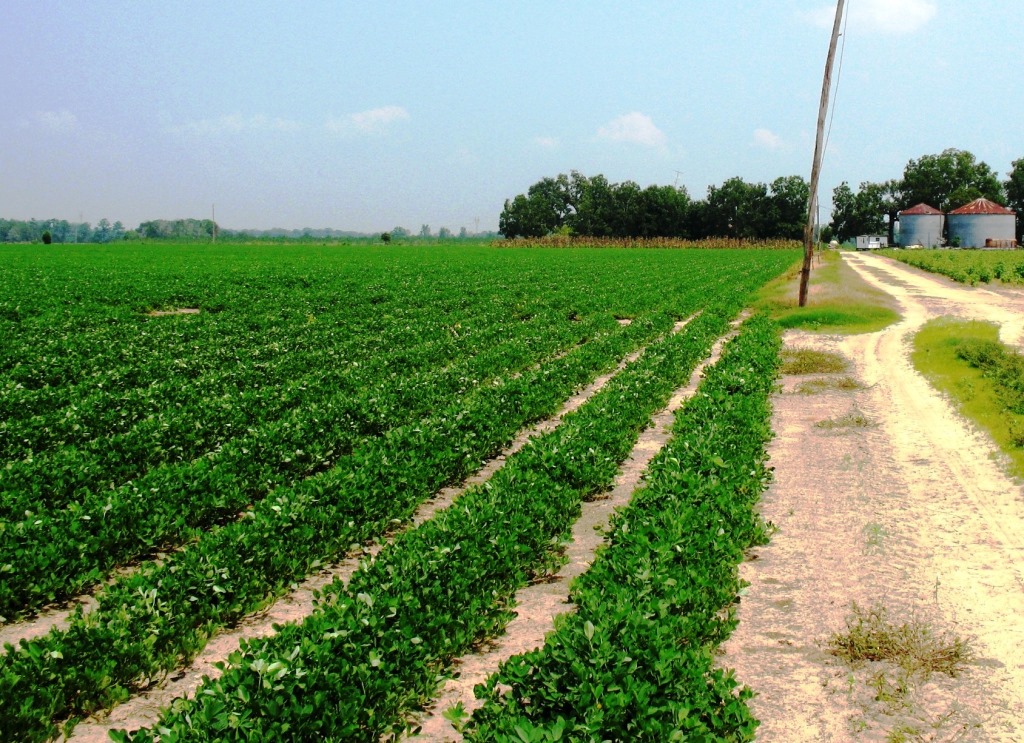
Plan ahead and use an enterprise budget to help you decide which crop or crops will be most profitable to plant this year. Photo By Judy Ludlow
By Henry G. Grant, Gadsden County Extension Director
The most importance decision to be made by farmers for the 2014 cropping season is the choice to develop a management plan and budget. Unusual weather events, increased production costs, and an expected decline in return on investment demands a survival strategy. Therefore, the decision to plant one or more of the four major row crops in this region relies on what you are best equipped to manage. Well thought-out management will be the key to profit, breakeven, or loss.
The use of an enterprise budget is a key tool to use in making decisions on what to plant and how much you are willing to invest after looking at the projected profit and break even scenarios. Maintaining structured control of input costs, and at the same time producing the highest yields possible under these restrained conditions, is paramount for success.
Enterprise budgets are a guide that individual producers can use to determine risk and return. More importantly, growers can use their own figures to develop a more realistic estimate of profit, breakeven, or loss. Enterprise budgets use only estimates and projections. Changes in price, yield, and actual costs of production will influence the return on investment. Therefore, your management plan should go a long way in helping you make the best choices. The following link provides a list of enterprise budget worksheets for each commodity to help you analyze production costs, etc. — North Florida Research and Education Center Enterprise Budget Information.
The tables below from the University of Georgia 2014 Peanut Update-2014 Cost And Returns Outlook, show 2014 budget estimates for peanuts, cotton, corn, and soybean. The budget estimates are intended as only a guideline as individual operations and local input prices vary. The fixed cost must also be considered and is deducted from the return above variable cost. For financial planning purposes, Chuck Danehower, University of Tennessee Extension has been using the following projected prices for 2014: corn – $4-$4.50 bushel corn; cotton – $0.78 – $0.80 per pound, and soybeans – $11 – $11.50, and Nathan B. Smith and Amanda Smith, University of Georgie Extension, use a price of $440 per ton for peanuts in their enterprise budget estimates
Table 1. Comparison of Per Acre Return above Variable Cost for Non-Irrigated Crops
|
|
Expected Price |
Expected Yield |
Variable Cost* |
Return Above VC |
|
Peanut |
$440 |
3400 |
$554 |
$194 |
|
Cotton |
$0.75 |
750 |
$419 |
$144 |
|
Corn |
$4.60 |
85 |
$285 |
$106 |
|
Soybean |
$10.80 |
30 |
$227 |
$97 |
Table 2. Comparison of Per Acre Return above Variable Cost for Irrigated Crops.
|
|
Expected Price |
Expected Yield |
Variable Cost* |
Return Above VC |
|
Peanut |
$440 |
4700 |
$670 |
$364 |
|
Cotton |
$0.75 |
1200 |
$532 |
$368 |
|
Corn |
$4.60 |
200 |
$630 |
$290 |
|
Soybean |
$10.80 |
60 |
$328 |
$320 |
2014 University of Georgia preliminary cost enterprise budgets.
For more information please see the following publications:
- 2014 Peanut Production Update University of Georgia, Cooperative Extension
- 2014 Georgia Cotton Production Guide University of Georgia, Cooperative Extension
- 2014 Corn Production Guide University of Georgia, Cooperative Extension
- Farmers will have to keep a Lid on 2014 Costs, in Southeast Farm Press, by Chuck Danehower, University of Tennessee
- University of Florida Row Crop Information
- Friday Feature:Malone Pecan Festival Tractorcade - November 21, 2025
- October 2025 Weather Summary and Winter Outlook - November 14, 2025
- Friday Feature:The Untold Story Behind the Beef for Dinner Tune - November 14, 2025
